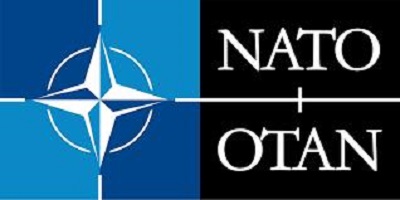Context-
The North Atlantic Treaty Organization (NATO) came into being on April 4, 1949. Initially known as the ‘Atlantic Alliance,’ NATO has evolved into a complex and enduring military alliance. Despite setbacks, such as the failures in Afghanistan, Russia’s recent aggression has reinvigorated NATO, reinforcing its relevance in the modern geopolitical landscape.
A Glimpse into NATO's Genesis
- Formation and Purpose : NATO began as the 'Atlantic Alliance' with 12 founding members, including the U.S., Canada, the U.K., France, and Belgium. Its primary aim was to deter Soviet Union expansion under Stalin, who was consolidating control over Eastern and Central Europe post-World War II. The organization’s purpose was succinctly captured by its first secretary-general, Baron Hastings ‘Pug’ Ismay: “to keep the Soviet Union out, the Americans in, and the Germans down.”
- Historical Context : In Gen. Sir John Hackett’s alternate fiction, The Third World War (1978), NATO faces a deliberate provocation that escalates into a global nuclear conflict, highlighting the high stakes of NATO's mission. This gripping narrative, unlike typical military publications, offered an engaging way to understand NATO’s complex structure.
The Cold War and NATO's Evolution
- Soviet Threat and Initial Expansion : U.S. President Harry Truman’s administration was keenly aware of the Soviet threat, especially after Stalin’s actions in Eastern Europe. The Berlin Blockade of 1948 and the subsequent Berlin Airlift were pivotal events that underscored the necessity of a strong military alliance. The blockade, which lasted for 323 days, saw Allied planes supplying Berliners with essentials, demonstrating the West’s resolve against Soviet aggression.
- NATO's Early Challenges : Despite its formation, NATO faced internal tensions. A key point in its early history was the distrust between the Western European powers and the U.S., exacerbated by events such as the Soviet-backed coup in Czechoslovakia in 1948. The Brussels Pact of March 1948, involving the U.K., France, and the Low Countries, laid the groundwork for NATO by establishing a coordinated defense effort under British war hero Field Marshal Bernard Montgomery.
Structure and Strategy
- Operational Framework : NATO’s structure was influenced by the coordination plans developed during World War II by Supreme Allied Commander Dwight D. Eisenhower. These plans facilitated the integration of military strategies among member nations. Despite its democratic ideals, NATO included non-democratic states like Salazar’s Portugal, highlighting the pragmatic approach to alliance-building.
- Secret Armies and Cold War Tactics : NATO’s clandestine operations included the Gladio network, comprising military operatives and involving the mafia and the Vatican. This network aimed to counter Soviet influence in Europe, reflecting the covert dimensions of NATO’s strategy.
NATO’s Endurance and Adaptability
- Historical Parallels : Peter Apps, in his biography of NATO, Deterring Armageddon, compares NATO to the ancient Delian League, which lasted 74 years. NATO, now 75 years old, has outlasted this historical precedent, demonstrating its resilience.
- Key Anecdotes : Apps recounts intriguing episodes, such as the 1954 proposal by Soviet Foreign Minister Molotov to join NATO, and Eisenhower’s preference for NATO command over peacetime university administration, shedding light on the alliance’s nuanced history.
NATO and the Soviet Union
- Soviet Proposal for Membership : In a surprising turn of events, Soviet Foreign Minister Molotov proposed Soviet membership in NATO in 1954, a move aimed at taking diplomatic initiative. Although this proposal was not pursued, it highlighted the complexities of Cold War diplomacy.
- Berlin Blockade and Airlift : The Berlin Blockade of 1948 and the subsequent airlift were crucial moments in NATO’s history. These events demonstrated the Western Allies’ commitment to counter Soviet aggression, solidifying the necessity of a robust military alliance.
Modern Challenges and Relevance
- Failures in Afghanistan : NATO’s mission in Afghanistan, marked by its ultimate withdrawal, was a significant setback. The alliance struggled to achieve lasting stability in the region, leading to questions about its effectiveness in non-European conflicts.
- Resurgence Due to Russian Aggression : Recent Russian actions, particularly in Ukraine, have reinvigorated NATO. The alliance has found new purpose in countering Russian expansionism, echoing its original mission against the Soviet threat.
NATO’s Future
- Integration and Transparency : Wallace Thies, in Why NATO Endures (2009), argues that NATO’s success lies in its unprecedented integration and transparency among member states. Unlike pre-1939 alliances, NATO members share capabilities and intentions, fostering a cohesive defense strategy.
- Addressing Internal Criticisms : Despite its strengths, NATO faces internal criticisms. Employers often accuse the alliance of operating as an "inspector-raj," implying harassment and corruption. Reform measures, such as self-certification and randomized inspections, have been introduced but remain inadequate.
International Perspectives and Comparisons
- Pre-NATO Alliances : Historical alliances, such as those described by Walter L. Dorn and A.J.P. Taylor, were marked by mutual suspicion and opportunism. In contrast, NATO’s focus on integration and mutual defense represents a significant evolution in alliance-building.
- Cold War Legacies : NATO’s strategies during the Cold War, including the establishment of secret armies and the involvement of non-democratic states, reflect the pragmatic approach needed to counter the Soviet threat.
Conclusion
NATO’s history and evolution demonstrate its resilience and adaptability in the face of changing geopolitical landscapes. The alliance’s ability to integrate and transparently share capabilities among its members has been key to its enduring success. As NATO navigates modern challenges, including Russian aggression and internal criticisms, its foundational principles of mutual defense and collective security remain as relevant as ever.
|
Probable Questions for UPSC Mains Exam
|
Source- The Hindu







